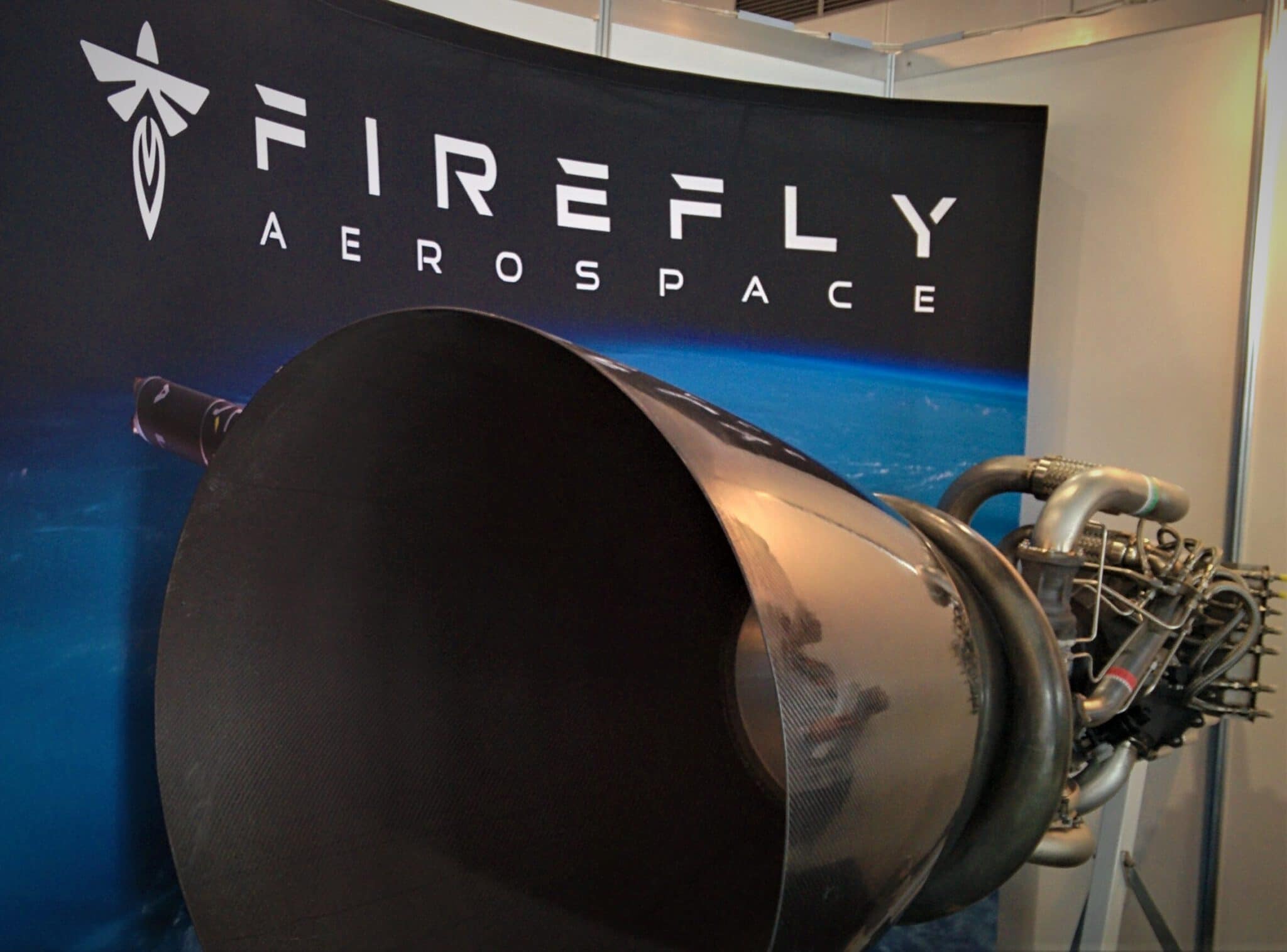Spaceflight 2021 – What can we expect?
The year 2021 is coming closer and 2020 was already a year with very much highlights in world’s spaceflight. Let’s have a look what we can expect in 2021.
New rockets
Let’s s start with a deeper look on the rocket development. This year we have seen the first flights of the private companies Astra with Rocket 3.0 (USA), Galactic Energy with Ceres-1 (China) and Virgin Orbit with Launcher One. But only Rocket 3.0 and Ceres-1 reached space. Also some state-owned rockets had there first flights: Quased (Iran), Long March 8, 5B and 7A (China) and Kuaizhou 11 (China).
We will see another new rockets in 2021. The first launch attempt is planned for the small launcher Firefly Alpha from the American company Firefly Aerospace in January 2021 at Vandenberg Air Force Base in the USA. The launcher will similar in size and payload mass to Rocket Lab‘s Electron rocket. The first payloads will be multiple cubesats. The main image of the article is the first stage engine of the Firefly Alpha rocket.
A second attempt will be followed by Virgin Orbit with its Launcher One rocket. The rocket will be launched from Cosmic Girl – a modified Boeing 747 plane. Take off of the plane will be Mojave Air and Space Port again.
The next rocket will be the American ULA‘s new Vulcan Centaur rocket in Q2 2021. It will be the successor of the very successful – but expensive – rocket Atlas 5. The first payload will be Astrobotic‘s lunar lander. We will write about this moon mission later.
The third candidate for a first flight in 2021 is the H3 rocket from Japanese Mitsubishi Heavy Industries in spring. The H3 will launch from Tanegashima Space Center and is also a cheap successor for the successful H2 rocket. The first payload will be the Earth Observation satellite ALOS-3 built by Japan’s Space Agency JAXA.
A very interesting first flight will be the flight of the small launcher Terran 1 rocket created by the American company Relativity Space. There approach is to print all components of a rocket by 3d printing. They already using the largest 3d printer in their factory and tested the first components successfully in Stennis Test Facility in south USA. The first launch will occur from Cape Canaveral in fall 2021. The first payload is still unknown.
A interesting private Chinese company is Linkspace. They were the first company who wanted to copy the vertical landing of the first stage performed by SpaceX. The made already some small flight up to 300m -similar to SpaceX‘s Grasshopper flights. The maiden flight of Linkspace’s reusable rocket New Line-1 is planned for Q4 2021 to bring a around 200 kilogramm payload into a earth orbit.
The year 2021 is also the Dawn of the Heavy lift rockets. The first orbit flight is planned for Blue Origin‘s 98 meters height New Glenn rocket in fall. The space company of the world richest person – Jeff Bezos – want to launch from Cape Canaveral Air Force Station into orbit. The first stage will try to fly back to earth and will land on a former ferry boat – also similar to SpaceX‘s well tested approach. The first stage will be powered by seven BE-4 rocket engines build also by Blue Origin. The same engine type will be used on the already mentioned Vulcan Centaur rocket.
The last candidate in the maiden flights for 2021 is the first launch of NASA’s SLS (Space Launch System) in November 2021. The rocket is like a hybrid of the Space Shuttle and the moon rocket Saturn V. The height is impressive – with 111 meters even higher than the New Glenn rocket! The rocket will launch the Artemis-1 mission from Kennedy Space Center at launch pad LC-39B to the moon. We will talk about it later in the article.
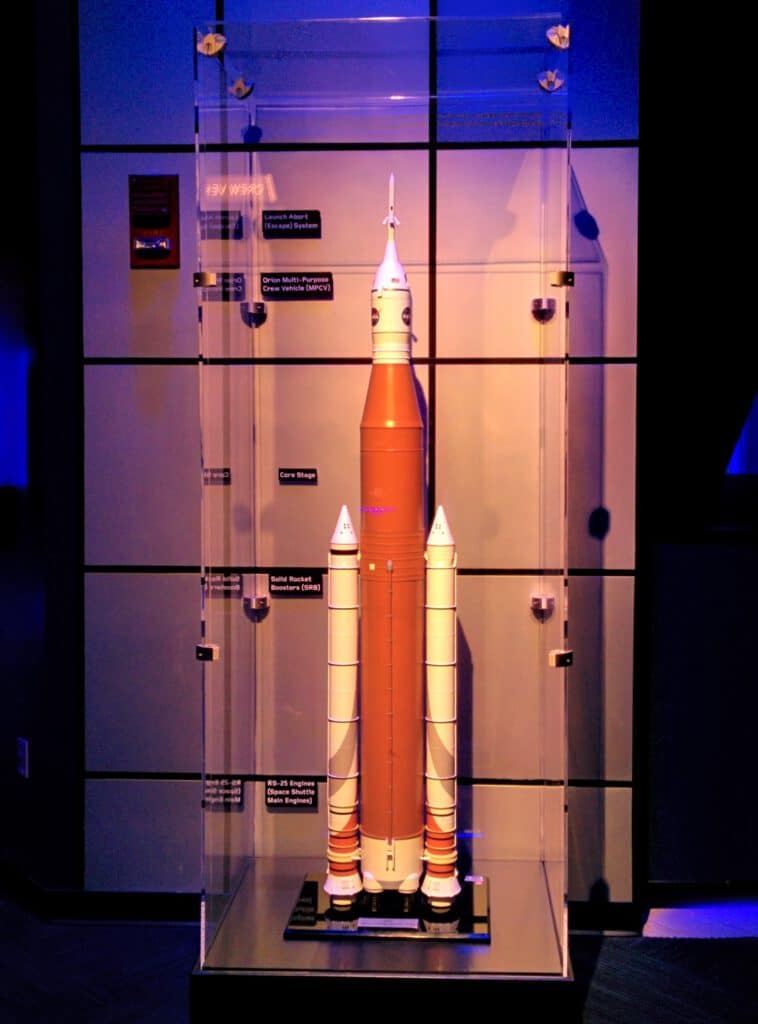
A surprise could be SpaceX: In the last months they showed a impressive speed in development of their Starship and Super Heavy booster. The first Starship (SN8) made its maiden flight up to 12.5 km. All mission goals – except the landing – was achieved. The next prototype SN9 is already at the launch pad – and prototypes till SN15 are already in production. Also the first Super Heavy booster is in production. It could be possible that we can see a Starship and a Super Heavy booster in orbit till then End of 2021.
Moon in focus
The Chinese Chang’e-5 mission this year was just a beginning of a new area of spaceflights to our cosmic neighbor – the Moon. This time the humans will come to Moon to stay there.
In 2021 we will see the first two private American moon missions. The first private mission was performed by Israel’s SpaceIL with Beresheet lander in 2019. They arrived moon orbit but the lander was destroyed during landing.
The first private moon mission this year will be Astrobotic’s Peregrine lander which will be launched on the maiden flight of the Vulcan Centaur rocket. The Peregrine lander will try to land with payloads from six countries in a mid-latitude region on the Moon.
The other company is Intuitive Machines which will fly with a Falcon 9 rocket into space in October 2021. The IM-1 mission will try to perform a landing with their Nova-C lander in a flat area in Oceanus Procellarum. Its the same region where Chang’e-5 landed this year.
India wasn’t happy to see the Chandrayaan-2 lander destroyed on the moon surface. The want to try the moon landing in 2021 with Chandrayaan-3 again. The Lander is a improved copy of the Chandrayaan-2 lander – but the 2021 mission has no Orbiter. Lets see if the second attempt will be a success.
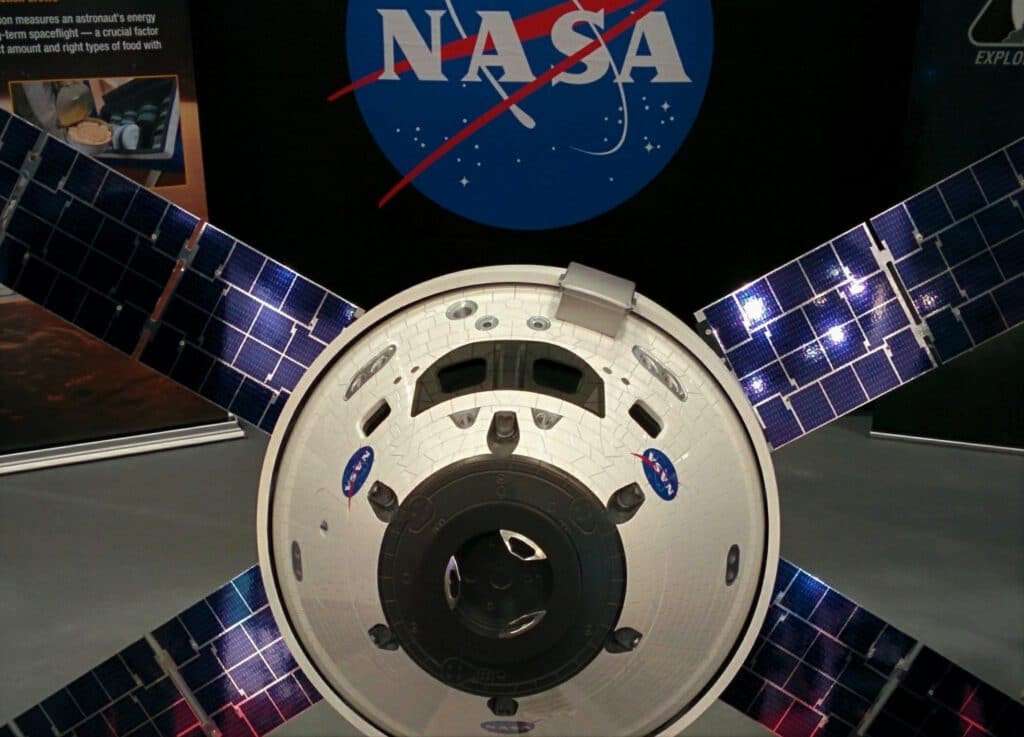
The biggest moon mission in 2021 is the American Artemis-1 mission. It will pave the way for humans back to Moon. During the Artemis-1 mission the already mentioned SLS rocket will be tested. But also the Orion spacecraft with the European Service Module will be tested – but without humans on-board. The spacecraft will fly on its 25-day-mission 6 days around the moon in a orbit that will be later used for the planned Lunar Gateway (a future International Space Station in Moon orbit). The mission is planned for November 2021 – but it is already years behind its planned schedule. We hope we can see it finally fly successfully.
Spacecrafts arriving Mars
Not only our cosmic neighbor gets attention from us. Also the Red Planet will receive some guests. We wrote about the new international space race to Mars last summer. The launches of three spacecrafts from different nations was spectacular. But the flight to the Red planet is quite – but the arrival will be spectacular again.
The first spacecraft which will arrive on Mars will be United Arab Emirates Hope (Arabic: Al-Amal) / EMM (Emirates Mars Mission) at 9th February 2021. Hope is a orbiter and will have a look on to the surface from a far distance. The Team around Emirates’s mars mission decided to not repeat just another mission – they want to fill a knowledge gap in Mars research. They met with scientists around the world and after the meetings they selected the right instruments and the correct orbit. Onboard the Hope mission are three scientific instruments: EXI – a high-resolution camera, EMIRS – a infrared spectrometer and EMUS – a ultraviolet spectrometer. The Semi-synchronous orbit around the red planet will be very high. The lowest distance (perigee) will be around 20.000 km and the furthest point (apogee) will be around 43.000 km. These are the best conditions to study the Martian atmosphere.
The American Mars 2020 mission with the Rover Perseverance will arrive on Mars at 18th February 2021 – just 10 days after Hope. The mission profile is close to the Curiosity Mars mission – the still driving and operating Mars rover on Mars. Perseverance will not enter a orbit around Mars and will directly enter the atmosphere of Mars. The spacecraft is protected with a heath shield. After reducing speed in the Martian atmosphere a parachute – the biggest on Mars so far – will reduce more speed and bring the rover closer to the Mars ground. 1.8 km above ground the Ascent stage will start work and reduce with rocket engines the speed down to zero. A sky crane will than release the Rover Perseverance down to the Mars surface in the Jezero Crater. After touchdown the Rover will drive around its landing site and will make astrobiological and geological research. A robot arm can inspect rocks and solid closer and take samples to inspect them in a small laboratory inside of the body of the rover. The best samples will be stored in sample containers. A future Mars mission will collect this sample containers and will bring it back to Earth. During the mission a small drone – called Ingenuity – will try to inspect the Mars surface from air. The drone will be the first aircraft on Mars.
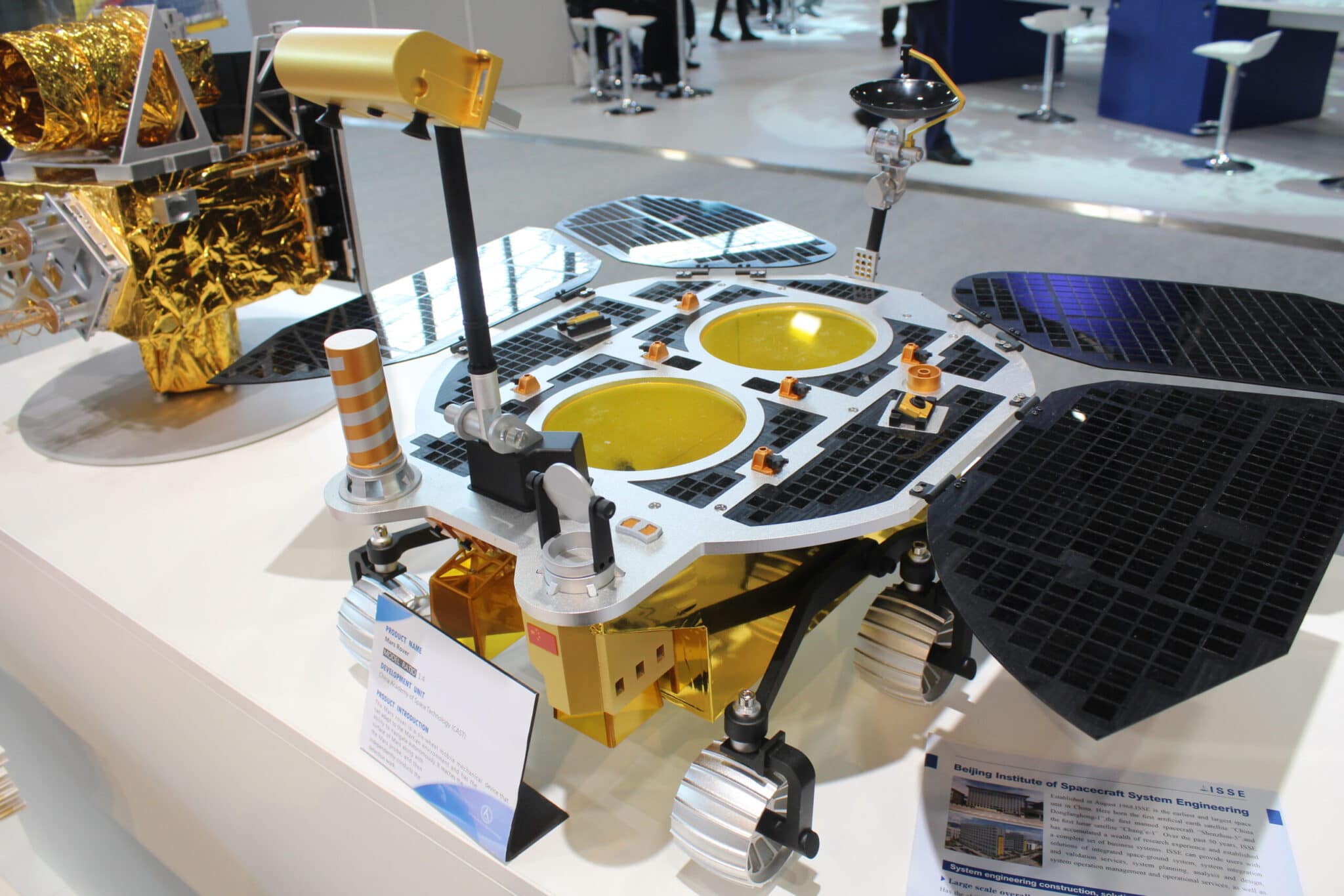
The third spacecraft which will arrive on Mars in spring is China’s Tianwen-1 mission. This is a flagship mission with an Orbiter, Lander – and a Mars rover. The arrival date on Mars will be around the 11th till 24th February. The spacecraft will enter an Mars Orbit 400 km above the ground. The two cameras MRC and HRC will photograph the Martian surface with a resolution of 100m (MRC) and 2m (HRC). The Lander will separate from the Orbiter around the 23rd April and will land under parachute and rocket engines in Utopia Planitia. The Rover will then drive down from the lander onto the Martian surface. The Rover has a spectrometer, a radar to inspect 100m into ground, a navigation and a high-res camera. This mission is very ambitious because it is China’s first but very complex Mars mission.
What about Asteroids?
We learned that the extinction of the Dinosaur was a result of a collision by a asteroid and we saw it very colorful in the Hollywood movies Deep Impact and Armageddon in 1998 that Asteroids and Comets could be also dangerous for humans. But we never really tried so far to direct a asteroid on another path. The DART (Double Asteroid Redirection Test) mission will try to this. The spacecraft will be launched on a Falcon 9 rocket at 22nd July 2021 from Vandenberg Air Force Base and will arrive the Asteroid Didymos (around 780 meters in diameter) with its mini moon Dimorphos (100 meters in diameter) in October 2022. DART will hit Didymos with a speed of 6 km per seconds and will change the speed of the asteroid of around 0.4 mm per seconds. That sounds not much – but its a huge change over a long path through space. A European spacecraft – HERA – will be launch in 2024 and will arrive Didymos in 2027 to inspect the impact of DART on the Asteroid in detail.
Another American Asteroid mission scheduled in spaceflight year 2021 is Lucy. The NASA mission will launch at 16th October 2021 on a Atlas 5 rocket at Cape Canaveral. Lucy’s destinations are one asteroid in the main asteroid belt between Mars and Jupiter and six Jupiter trojans. Trojans are asteroids that flying on the same orbit of a planet around the sun. Lucy will inspect these seven asteroids with a panoramic and a high-resolution camera during passing by these objects. The first object is the Main Belt asteroid Donaldjohanson in April 2025 and the last object the Jupiter Trojan Patroclus in March 2033.
Expansion of the Space Stations
The International Space Station is flying already 20 years above our heads and is getting older and older. So Russia wants to update its part of the International Space Station. The long awaited Nauka module will fly in summer 2021 to the space station. The European Robotic Arm is attached on this module and will help to perform space walks or robotic operations from inside of the station. In late autumn will follow the small Prichal module with five additional docking ports.
SpaceX transported for the first time astronauts to the International Space Station with the Crew Dragon capsule. Boeing’s Starliner CST-100 is still waiting to perform this job. Before humans can book a ticket on this spacecraft the Starliner has to fly a successful mission to the International Space Station. The first attempt failed in December 2018. The second attempt with the mission name Boe-OFT 2 is now expected in April 2021.
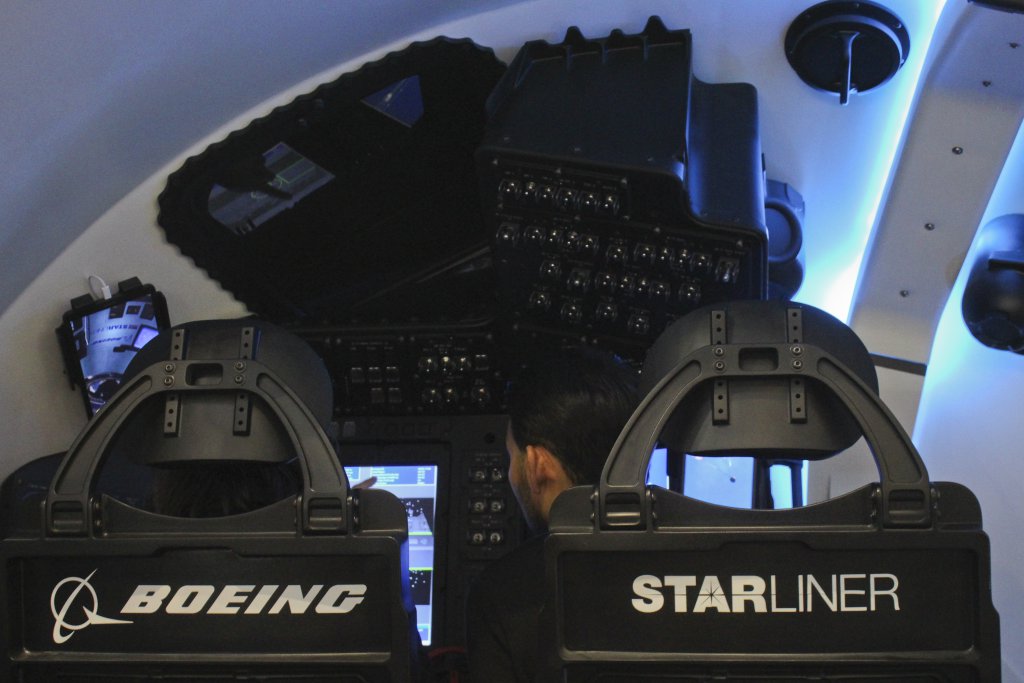
The USA refused China to be a member of the International Space Station. So China launched its first own space station in 2011 with Tiangong 1. The second space station followed in 2016 with Tiangong 2. But these stations were only one module like the Soviet Salut stations or the American Skylab. The stations reentered Earth’s atmosphere after multiple visits of manned Shenzhou and unmanned Tianzhou visits. China wants to start to build a multi module station – called Chinese Space Station – in early 2021. The first and core module of the station Tianhe will fly on a Long March 5 rocket from Wenchang Spacecraft Launch Site on the Hainan island in China. The second module – the science module Wentian. The Chinese Space Station will be a additional new light object at the night sky to the International Space Station.
Deep Space
Not only NASA’s SLS rocket is late. Another expensive project is years behind the planned schedule – the James Webb Space Telescope (JWST). The biggest space telescope in history with a 6.5 meters mirror (Hubble Space Telescope: 2.3 meters) is now scheduled to launch on a Ariane 5 rocket from French Guiana in late October 2021. The successor of the famous Hubble Space Telescope will not operate in a near earth orbit. The JWST will stay in the L2 point between Sun and Earth and will made research with a higher infrared resolution and sensitivity than Hubble.
Space Tourism is back
It’s already 10 years ago that a tourist went into the earth orbit and enjoyed the view of the earth and space by using there own money. The last one was Guy Laliberte who paid around 25 million USD to fly into space in September 2009. Since these days were only four test pilots and one employee from Virgin Galactic at the boundary to space during two suborbital test flights onboard of SpaceShipTwo spacecraft VSS Unity. But the highest point of the flights was only 90 kilometres. Space starts at the Karman line with 100 km above ground.
In 2021 the space tourism has a huge comeback: The first private mission for a flight into orbit to the International Space Station was announced by the popular Space Tourism Agency Space Adventures this year. Two tourists will launch aboard a Soyuz rocket from Russian Cosmodrome Baikonur in Kazakhstan on the Soyuz MS-20 mission in December 2021. It’s still unclear who are the two tourist who bought this flight tickets. But the two tourists could be Austrian pilot Johanna Maislinger and Japanese businessman and Artist Satoshi Takamatsu – or another Japanese women. However the pilot of the spacecraft will be Roskosmos cosmonaut Aleksandr Misurkin on his third spaceflight. Space Adventures not revealed how much is the price of a Soyuz seat for this mission yet.
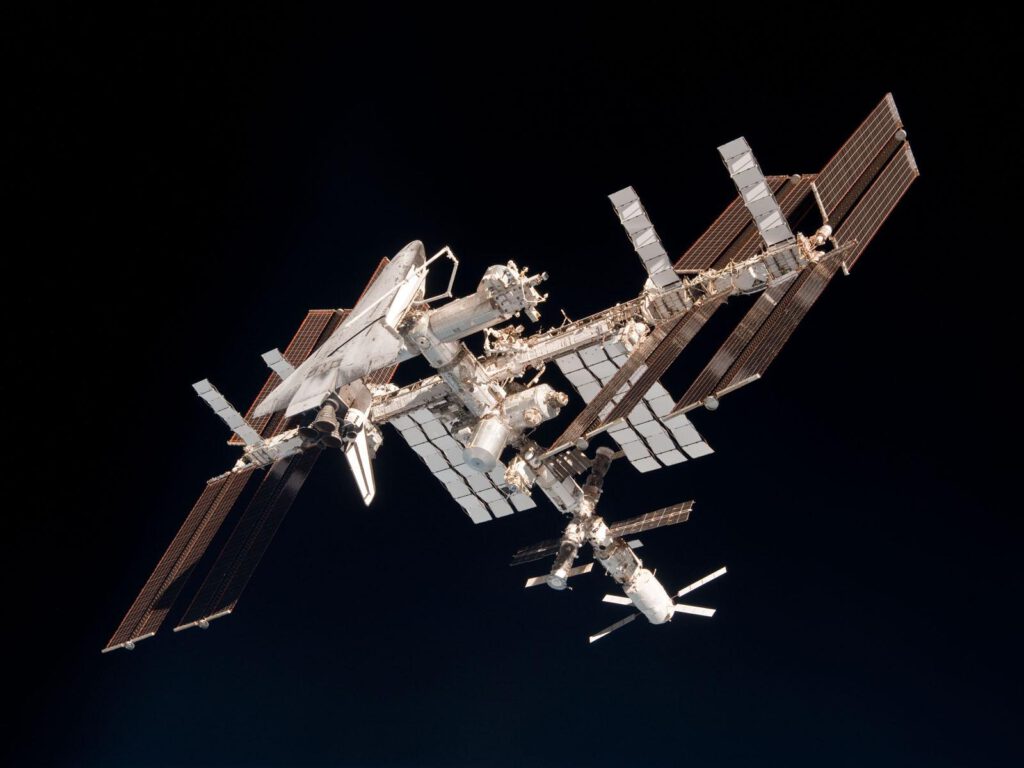
Another 10 day mission with three tourists is planned aboard a SpaceX Crew Dragon with the famous Hollywood Actor Tom Cruise, his director Doug Liman and a Israeli Businessman Eytan Stibbe booked by Axiom Space. They also want to fly to the International Space Station. This would be the first real private mission onboard a private spacecraft (SpaceX Crew Dragon), a private Astronaut pilot (former NASA astronaut Michael López-Alegría working for Axiom Space) and this three tourists. The price for a seat on Axiom’s first mission is with 55 million USD not cheap.
More affordable flights will start on the first commercial suborbital flights with Virgin Galactic‘s SpaceShipTwo from Spaceport America in New Mexico. But it’s still unclear when the first commercial flights will start – especially after the launch abort at the beginning of this December.
It’s also possible to see the first customers flying on Blue Origin‘s New Shepard on a suborbital flight into space from Jeff Bezos’s Corn Ranch in Texas. But they still want to make “some” verification flights in 2021 before manned flights.
Summary
Info Shymkent believes the spaceflight year 2021 will be more interesting than 2020. There are so much new rockets, new space missions and new milestones in spaceflight. – So stay tuned for 2021 and look up to the sky!
You don’t want to miss a Rocket launch? Here is our rocket launch schedule for 2021: Rocket Launch Schedule 2021



